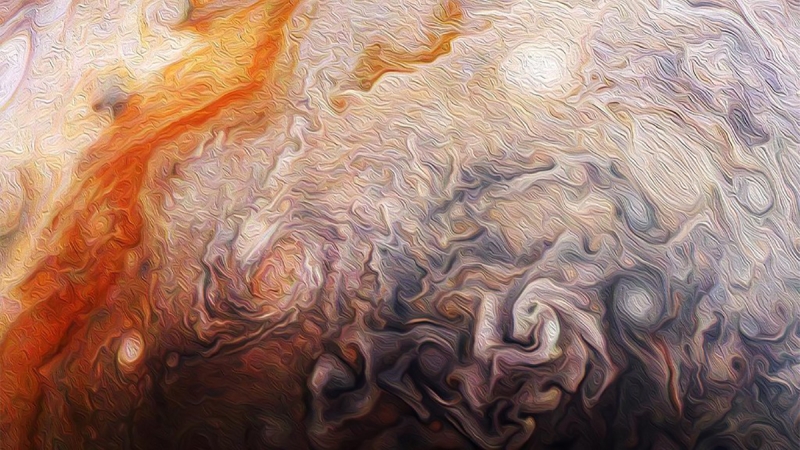Contents
NASA Astronomy Picture of the Day is a huge collection of astronomical images, both amateur and professional. It celebrates our amazing universe every day.
Since its inception in 1995, NASA APOD has been selecting and publishing some of the best images of space. Its two editors, Robert Nemiroff and Jerry Bonnell, are the people behind it. Here, you can see images taken with space telescopes like Hubble, JWST, etc. But it also includes amateur images taken with regular DSLR cameras.
Here are some of the best images from April 2025.
NGC 4414: A Flocculent Spiral Galaxy
How much mass do flocculent spirals hide? The highlighted image of NGC 4414, a flocculent spiral galaxy, was captured using the Hubble Space Telescope to assist in addressing this question. Flocculent spirals, which lack well-defined spiral arms, are a rather frequent type of galaxy, and NGC 4414 is one of the nearest. Stars and gas near the visible border of spiral galaxies orbit the centre at such high speeds that gravity from a huge amount of invisible dark matter is required to keep them together. Understanding the matter and dark matter distribution of NGC 4414 allows humans to calibrate the remainder of the galaxy and, by extension, flocculent spirals in general. Furthermore, calculating the distance to NGC 4414 allows humans to calibrate the cosmological distance scale for the entire visible universe.
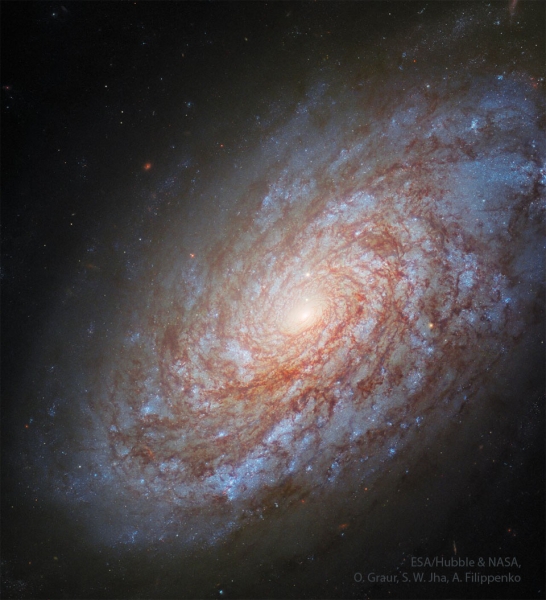
Image Credit: ESA/Hubble & NASA, O. Graur, S. W. Jha, A. Filippenko
Moon Visits Sister Stars
The Moon occasionally visits the Pleiades. Technically, this implies that our Moon’s orbit passes right in front of the renowned Pleiades star cluster, which is far away. The event is referred to as an occultation in technical terms, and the Moon is well-known for its uncommon occultations of all planets and several brilliant stars. The Moon’s tilted and precessing orbit causes it to occult the Seven Sisters star cluster in bunches, with the present epoch beginning in 2023 and continuing monthly until 2029. Following that, the next occultation will not occur until 2042. The featured image, taken on April 1 in Cantabria, Spain, is a composite of prior Pleiades exposures from the same camera and location that were digitally merged with the latest image to highlight the star cluster’s unique blue glow.
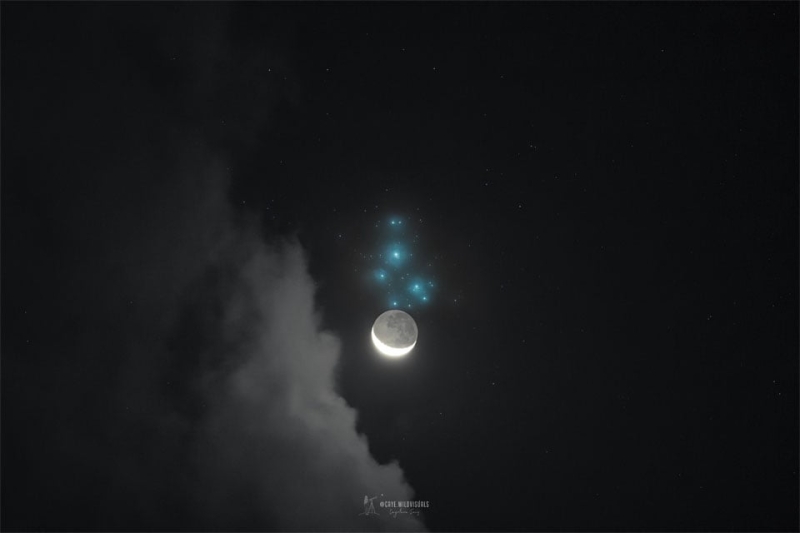
Image Credit: Cayetana Saiz
HH 49: Interstellar Jet from Webb
What lies at the tip of this intergalactic jet? First, consider the jet, which is being blasted by a newly formed star system and is known as Herbig-Haro 49 (HH 49). The star system that is expelling this jet is not visible; it is to the lower right. The James Webb Space Telescope’s infrared image shows a complicated conical structure that includes another jet catalogued as HH-50. The speeding jet particles collide with the surrounding interstellar gas, generating shock waves that glow brightly in infrared light (seen here as reddish-brown ridges). This JWST image also revealed the identity of the odd object at the tip of HH 49: it is a distant spiral galaxy.
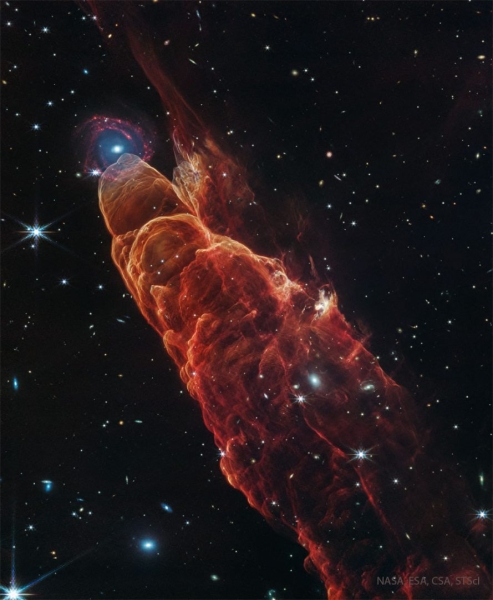
Image Credit: NASA, ESA, CSA, STScI, JWST
The ISS Meets Venus
On April 5, a well-planned film captured a crescent Venus beaming in a clear daytime sky from Shoreline, Washington, USA, at 11:57 a.m. Pacific Time, using a telescope protected from direct sunlight by an umbrella. It also captured the International Space Station in this single video frame. The faint shape of the orbital outpost, seen from a distance of around 400 km, appears to be similar in size to the slender planetary crescent. Of course, the ISS is significantly smaller than Venus. Venus, already visible as the bright morning star on Earth and rising beyond the eastern horizon in predawn skies, was about 45 million km away from the shoreline.

Image Credit & Copyright: A.J. Smadi
Moon Near the Edge
Most of us observe the Moon at night. However, the Moon spends roughly as many daylight hours above our horizon, though under a brilliant daytime sky, the lunar disc appears faint and can be difficult to detect. Of course, in the daytime, the Moon appears to cycle through its phases, illuminated by reflected sunlight as it round our lovely planet. For daytime moonwatchers, the Moon is most visible when the visible daylight portion of the lunar disc is huge and waxing after the first quarter or decreasing as it approaches the third quarter. Though it may appear rare, a daytime moon is frequently seen in the urban sky. A waxing daytime Moon is situated near the edge of a popular observation deck overlooking New York City’s borough of Manhattan, as seen in this telephoto photograph taken on March 12.
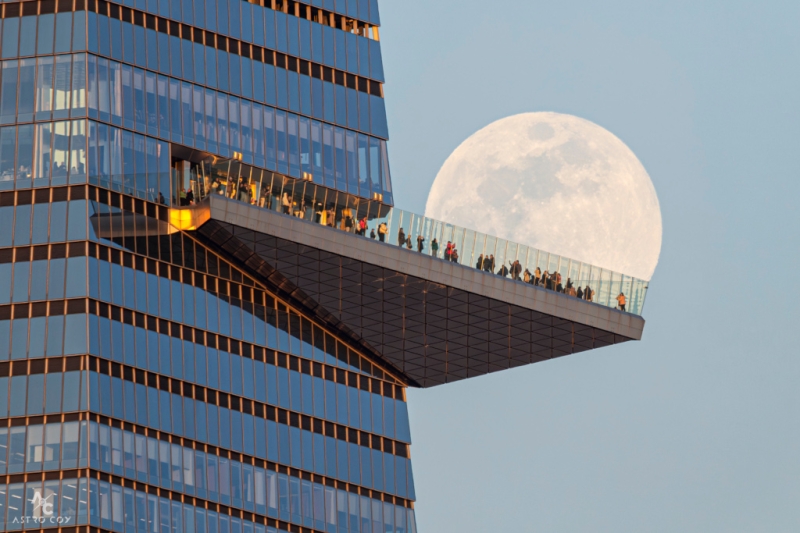
Image Credit & Copyright: Jordi Coy
An Unusual Hole in Mars
What caused this odd hole in Mars? There are several holes depicted in this Swiss cheese-like environment, with all but one of them revealing a dusty, dark Martian soil beneath evaporating, light carbon dioxide ice. The most interesting hole is on the upper right, measuring around 100 meters and appearing to blast through to a lower level. It is unclear why this hole exists and why it is surrounded by a circular crater, while one leading explanation is that it was caused by a meteor impact. Holes like this are particularly interesting because they could be entrances to lower levels that lead into vast underground tunnels. If so, these naturally occurring tunnels are largely safe from Mars’ harsh surface, making them potential candidates for containing Martian life. These trenches are thus ideal targets for potential future spaceships, robots, and perhaps human interplanetary explorers.
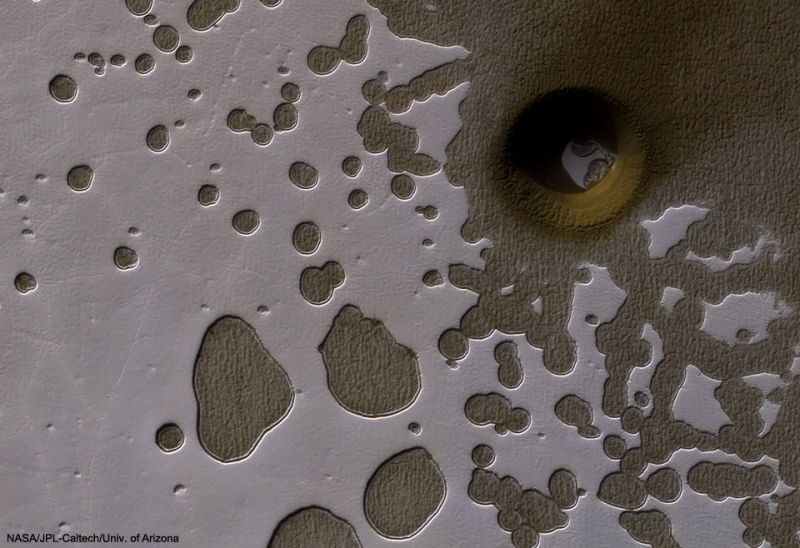
Image Credit: NASA, MRO, HiRISE, JPL, U. Arizona
Painting with Jupiter
This interplanetary post-impressionist work of art was created using digital brush strokes of Jupiter’s unique atmospheric bands and vortices. Rick Lundh, a citizen scientist, created this imaginative image using data from the Juno spacecraft’s JunoCam. To paint on the digital canvas, a JunoCam image with contrasting light and dark tones was processed using an oil-painting software filter. The picture data was collected during perijove 10. On December 16, 2017, Juno had a close encounter with the solar system’s reigning gas giant. At the moment, the spacecraft was approximately 13,000 km above the northern Jovian cloud tops. Juno is now on a prolonged mission to explore Jupiter and its moons after entering orbit around Jupiter in July 2016.
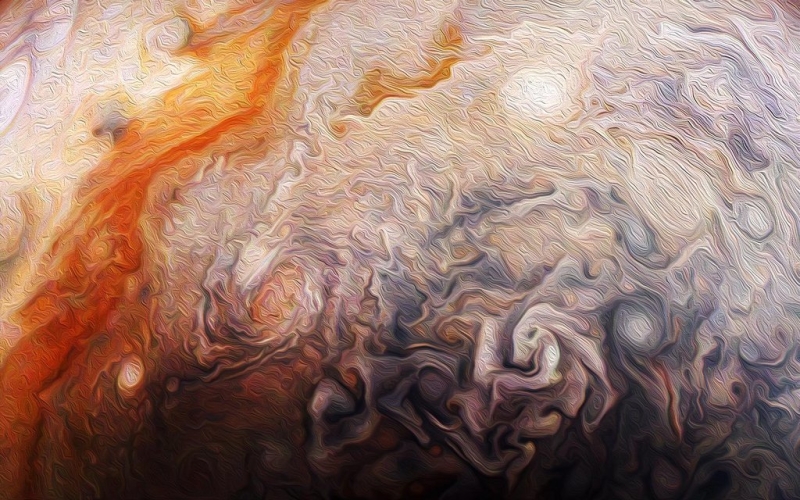
Image Credit: NASA, JPL-Caltech, SwRI, MSSS; Processing: Rick Lundh
The Orion Nebula in Visible and Infrared
The Great Nebula in Orion is a colorful place. Visible to the unaided eye, it appears as a small fuzzy patch in the constellation of Orion. Long exposure, multi-wavelength images like this, however, show the Orion Nebula to be a busy neighborhood of young stars, hot gas, and dark dust. This digital composite features not only three colors of visible light but four colors of infrared light taken by NASA’s orbiting Spitzer Space Telescope as well. The power behind much of the Orion Nebula (M42) is the Trapezium – four of the brightest stars in the nebula. Many of the filamentary structures visible are actually shock waves – fronts where fast-moving material encounters slow-moving gas. The Orion Nebula spans about 40 light years and is located about 1500 light years away in the same spiral arm of our Galaxy as the Sun. The Orion Nebula is located in the same spiral arm of our galaxy as the Sun, around 1500 light years away and spanning approximately 40 light years.
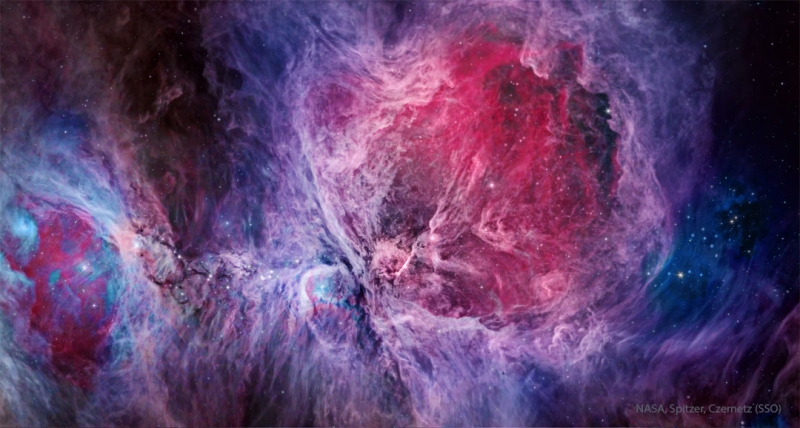
Image Credit & Copyright: Infrared: NASA, Spitzer Space Telescope; Visible: Oliver Czernetz, Siding Spring Obs.
Barred Spiral Galaxy NGC 5335
The Hubble Space Telescope snapped this magnificent image of NGC 5335. Hubble’s picture of the spectacular spiral galaxy, which is 170,000 light-years across and almost 200 million light-years away towards the constellation Virgo, shows it face-on. Loose streamers of star-forming areas can be found along the galaxy’s flocculent spiral arms. However, the most notable aspect of NGC 5335 is its broad centre bar. Bar formations, which are seen in approximately 30% of galaxies, including our Milky Way, are thought to channel material inward towards the galactic centre, thereby fuelling star formation. Of course, distant background galaxies are easily visible, distributed throughout the clear Hubble image.
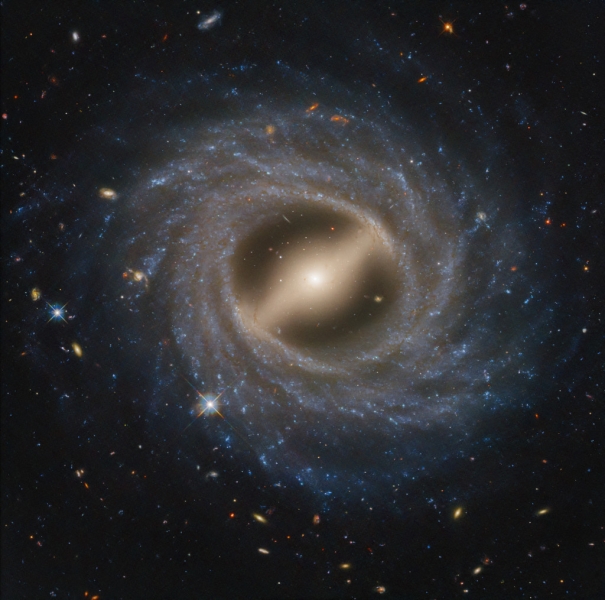
Image Credit: NASA, ESA, STScI
IC 418: The Spirograph Nebula
What causes the weird texture of IC 418? Planetary nebula IC 418, nicknamed the Spirograph Nebula due to its resemblance to drawings from a cyclical sketching tool, has poorly understood patterns. Perhaps they are related to the chaotic winds caused by the variable centre star, whose brightness fluctuates unpredictably every few hours. In contrast, evidence suggests that only a few million years ago, IC 418 was likely a well-known star akin to our Sun. Only a few thousand years ago, IC 418 was likely a common red giant star. Since running out of nuclear fuel, the outer envelope has begun to spread outward, revealing a hot remnant core destined to become a white-dwarf star, as shown in the image centre. The light from the central core excites the surrounding atoms in the nebula, causing them to glow. IC 418 is approximately 2000 light-years away and measures 0.3 light-years wide. This false-color view from the Hubble Space Telescope shows the remarkable details.

Image Credit: NASA, ESA, and the Hubble Heritage Team (STScI/AURA); Acknowledgement: R. Sahai (JPL) et al.
If you have a space image, you can submit it to NASA APOD, too.
For more incredible astrophotography photos, check our previous Breathtaking Astronomy Photos articles:
- Breathtaking Astrophotography Images – March 2025
- Breathtaking Astrophotography Images – February 2025
- Breathtaking Astrophotography Images – January 2025
- Breathtaking Astrophotography Images – December 2024
- Breathtaking Astrophotography Images – November 2024
- Breathtaking Astrophotography Images – October 2024
- Breathtaking Astrophotography Images – September 2024
- Breathtaking Astrophotography Images – August 2024
Clear skies!
